We reach more than 65,000 registered users in Dec!! Register Now
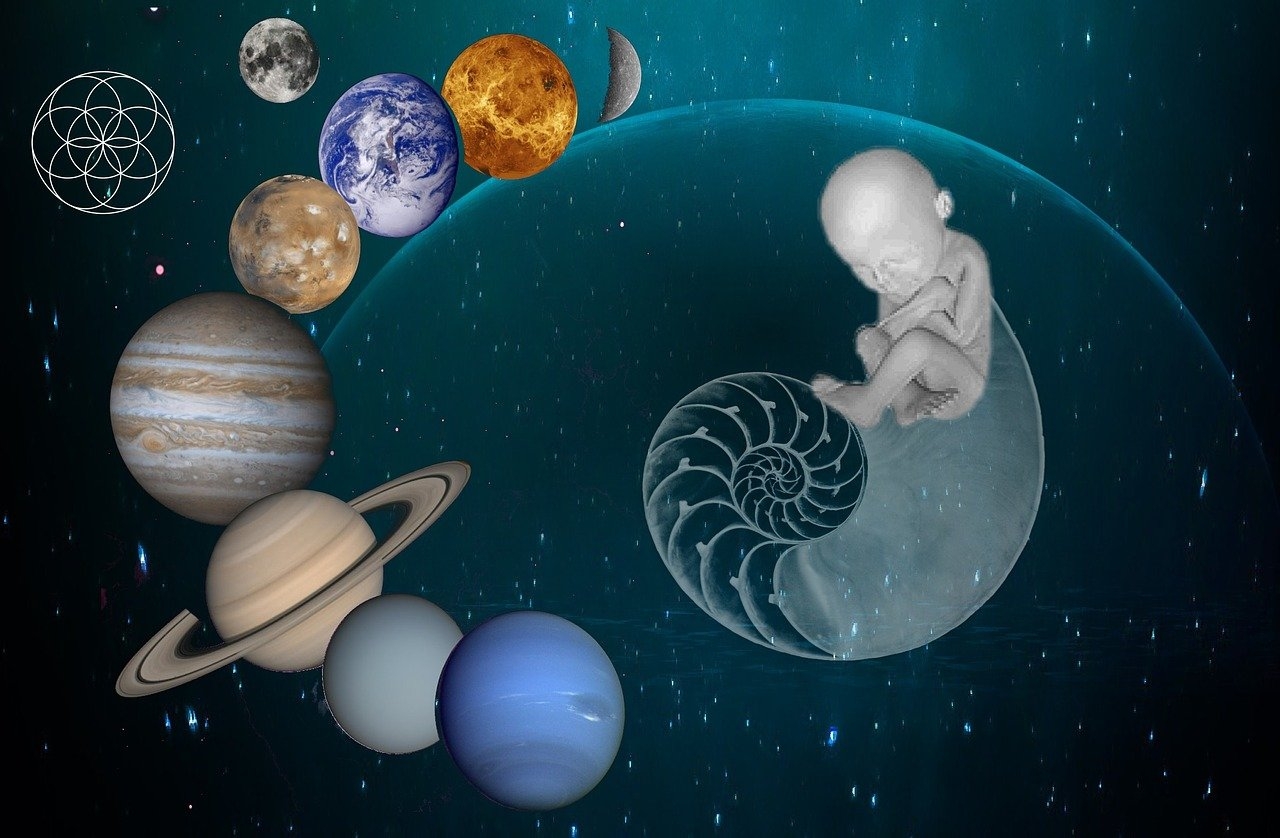
The birth of a solar system revealed by planet 'pebbles'
- July 10, 2025
- 3 Views
- 0 Likes
- 0 Comment
An artist’s impression of dust and tiny grains in a protoplanetary disc surrounding a young star (left) alongside an e-MERLIN map showing the tilted disc structure around the young star DG Tauri (top right) and the HL Tau disc captured by e-MERLIN is shown overlaid on an ALMA image, revealing both the compact emission from the central region of the disc and the larger scale dust rings (bottom right).
A fascinating glimpse into how a solar system like our own is born has been revealed with the detection of planet-forming 'pebbles' around two young stars.
These seeds to make new worlds are thought to gradually clump together over time, in much the same way Jupiter was first created 4.5 billion years ago, followed by Saturn, Uranus, Neptune, Mercury, Venus, Earth and Mars.
The planet-forming discs, known as protoplanetary discs, were spotted out to at least Neptune-like orbits around the young stars DG Tau and HL Tau, both around 450 light-years from Earth.
The new observations, revealed at the Royal Astronomical Society’s National Astronomy Meeting 2025 in Durham, are helping to fill in a missing piece of the planet formation puzzle.
"These observations show that discs like DG Tau and HL Tau already contain large reservoirs of planet-forming pebbles out to at least Neptune-like orbits," said researcher Dr Katie Hesterly, of the SKA Observatory.
"This is potentially enough to build planetary systems larger than our own solar system."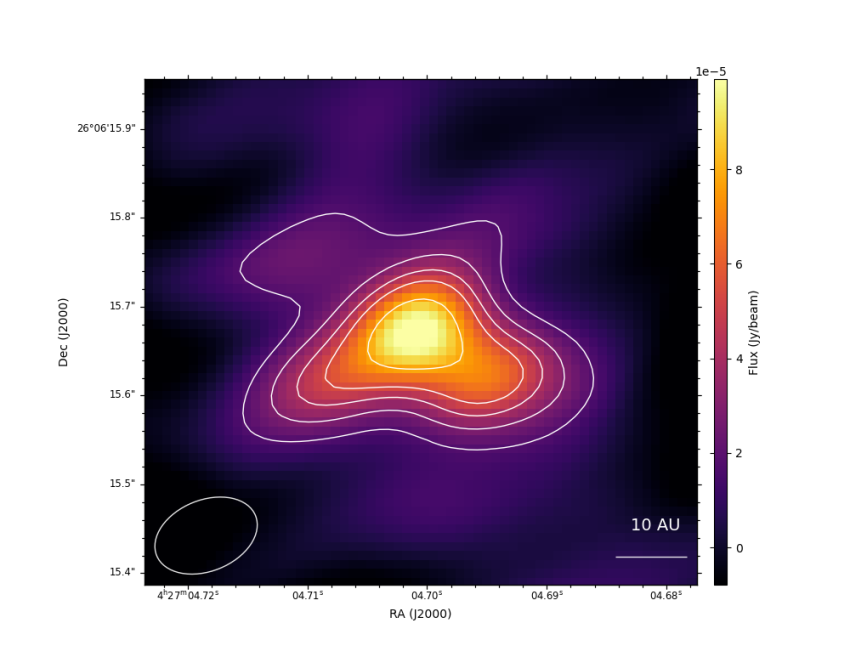 An e-MERLIN map showing the tilted disc structure around the young star DG Tauri where pebble-sized clumps are beginning to form. Its long axis is southeast to northwest (lower left to upper right). Emission from an outflow of material from the central star is also seen in the northeast and southwest directions.Hesterly, Drabek-Maunder, Greaves, Richards, et al.Licence typeAttribution (CC BY 4.0)
An e-MERLIN map showing the tilted disc structure around the young star DG Tauri where pebble-sized clumps are beginning to form. Its long axis is southeast to northwest (lower left to upper right). Emission from an outflow of material from the central star is also seen in the northeast and southwest directions.Hesterly, Drabek-Maunder, Greaves, Richards, et al.Licence typeAttribution (CC BY 4.0)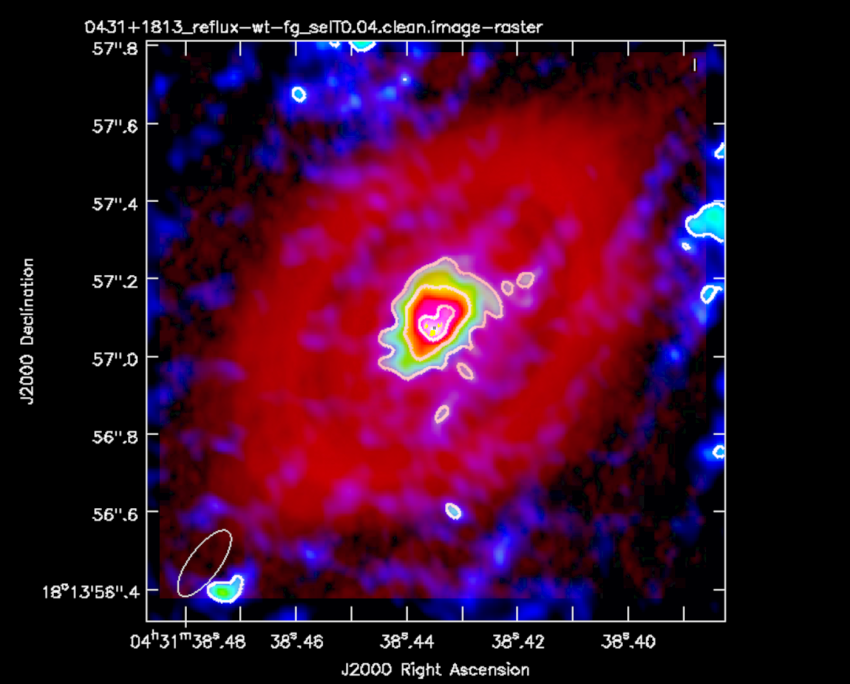 The HL Tau disc captured by e-MERLIN is shown overlaid on an ALMA image, revealing both the compact emission from the central region of the disc and the larger scale dust rings.Greaves, Hesterly, Richards, and et al./ALMA partnership et al.Licence typeAttribution (CC BY 4.0)The latest research is part of the PEBBLeS project (Planet Earth Building-Blocks – a Legacy eMERLIN Survey), led by Professor Jane Greaves, of Cardiff University.
The HL Tau disc captured by e-MERLIN is shown overlaid on an ALMA image, revealing both the compact emission from the central region of the disc and the larger scale dust rings.Greaves, Hesterly, Richards, and et al./ALMA partnership et al.Licence typeAttribution (CC BY 4.0)The latest research is part of the PEBBLeS project (Planet Earth Building-Blocks – a Legacy eMERLIN Survey), led by Professor Jane Greaves, of Cardiff University.
By imaging the rocky belts of many stars, the team are looking for clues to how often planets form, and where, around stars that will evolve into future suns like our own.
The survey uses e‑MERLIN, an interferometer array of seven radio telescopes spanning 217 km (135 miles) across the UK and connected by a superfast optical fibre network to its headquarters at Jodrell Bank Observatory in Cheshire.
It is currently the only radio telescope able to study protoplanetary discs – the cosmic nurseries where planets are formed – at the required resolution and sensitivity for this science.
"Through these observations, we’re now able to investigate where solid material gathers in these discs, providing insight into one of the earliest stages of planet formation," said Professor Greaves.
Since the 1990s, astronomers have found both disks of gas and dust, and nearly 2,000 fully-formed planets, but the intermediate stages of formation are harder to detect.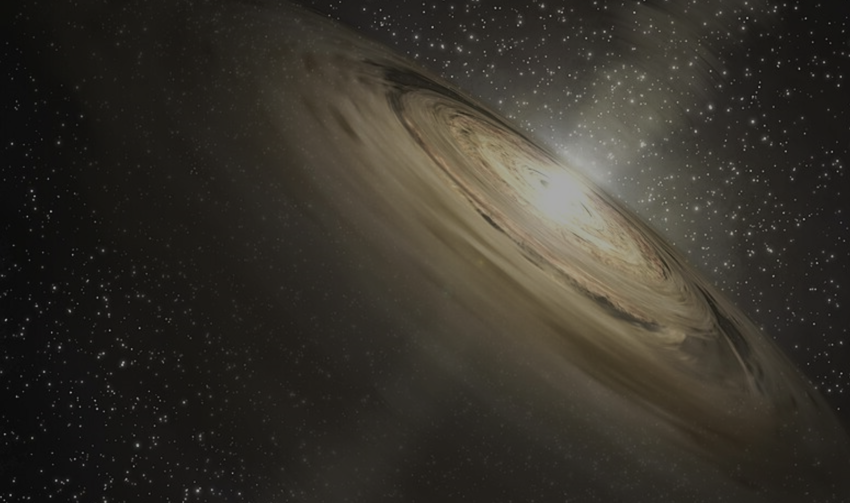 An artist’s impression of dust and tiny grains in a protoplanetary disc surrounding a young star.NASA/JPL-CaltechLicence typeAttribution (CC BY 4.0)
An artist’s impression of dust and tiny grains in a protoplanetary disc surrounding a young star.NASA/JPL-CaltechLicence typeAttribution (CC BY 4.0)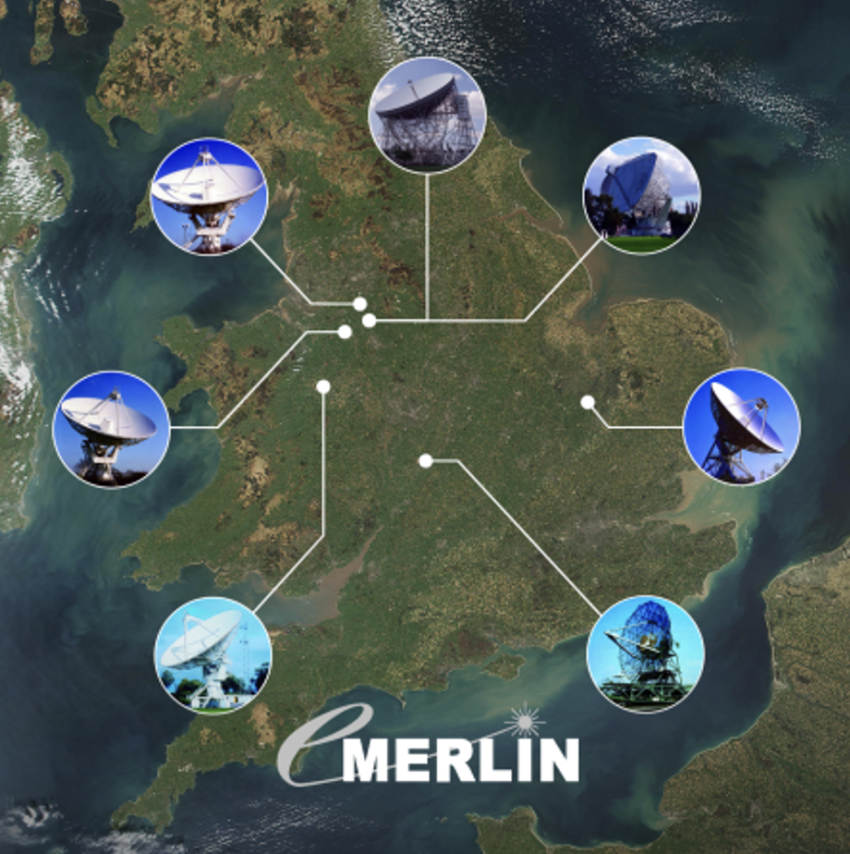 e‑MERLIN is an interferometer array of seven radio telescopes spanning 217 km (135 miles) across the UK, connected by a superfast optical fibre network to its headquarters at Jodrell Bank. Observatory in Cheshire.e‑MERLINLicence typeAttribution (CC BY 4.0)"Decades ago, young stars were found to be surrounded by orbiting discs of gas and tiny grains like dust or sand," said Dr Anita Richards, of the Jodrell Bank Centre for Astrophysics at the University of Manchester, who has also been involved in the research.
e‑MERLIN is an interferometer array of seven radio telescopes spanning 217 km (135 miles) across the UK, connected by a superfast optical fibre network to its headquarters at Jodrell Bank. Observatory in Cheshire.e‑MERLINLicence typeAttribution (CC BY 4.0)"Decades ago, young stars were found to be surrounded by orbiting discs of gas and tiny grains like dust or sand," said Dr Anita Richards, of the Jodrell Bank Centre for Astrophysics at the University of Manchester, who has also been involved in the research.
"Enough grains to make Jupiter could be spread over roughly the same area as the entire orbit of Jupiter, making this easy to detect with optical and infra-red telescopes, or the ALMA submillimeter radio interferometer.
"But as the grains clump together to make planets, the surface area of a given mass gets smaller and harder to see."
List of Referenes
Cite This Article as
No tags found for this post









